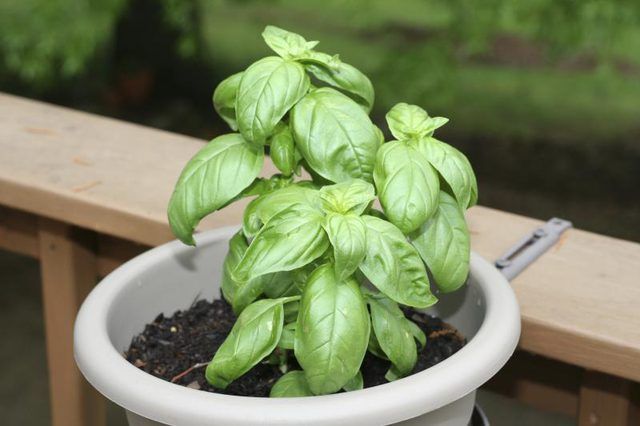Bulbs
Flower Basics
Flower Beds & Specialty Gardens
Flower Garden
Garden Furniture
Garden Gnomes
Garden Seeds
Garden Sheds
Garden Statues
Garden Tools & Supplies
Gardening Basics
Green & Organic
Groundcovers & Vines
Growing Annuals
Growing Basil
Growing Beans
Growing Berries
Growing Blueberries
Growing Cactus
Growing Corn
Growing Cotton
Growing Edibles
Growing Flowers
Growing Garlic
Growing Grapes
Growing Grass
Growing Herbs
Growing Jasmine
Growing Mint
Growing Mushrooms
Orchids
Growing Peanuts
Growing Perennials
Growing Plants
Growing Rosemary
Growing Roses
Growing Strawberries
Growing Sunflowers
Growing Thyme
Growing Tomatoes
Growing Tulips
Growing Vegetables
Herb Basics
Herb Garden
Indoor Growing
Landscaping Basics
Landscaping Patios
Landscaping Plants
Landscaping Shrubs
Landscaping Trees
Landscaping Walks & Pathways
Lawn Basics
Lawn Maintenance
Lawn Mowers
Lawn Ornaments
Lawn Planting
Lawn Tools
Outdoor Growing
Overall Landscape Planning
Pests, Weeds & Problems
Plant Basics
Rock Garden
Rose Garden
Shrubs
Soil
Specialty Gardens
Trees
Vegetable Garden
Yard Maintenance
2 mm Sized Flies Attracted to Basil Plants
2 mm Sized Flies Attracted to Basil Plants. Basil (Ocimum basilicum), a mainstay of herb gardens, bears flavorful, aromatic leaves. This warm-season annual has a reputation for repelling insects, but it attracts various pests, including whiteflies and aphids, both sap-sucking pests that reach about 2 mm long. The feeding activity of both types of...

Basil (Ocimum basilicum), a mainstay of herb gardens, bears flavorful, aromatic leaves. This warm-season annual has a reputation for repelling insects, but it attracts various pests, including whiteflies and aphids, both sap-sucking pests that reach about 2 mm long. The feeding activity of both types of insects damage basil leaves, reducing the amount of the herb left for you to harvest. Fortunately, you can get rid of both whiteflies and aphids using the same treatments.
About Whiteflies
Whiteflies are soft-bodied pests that seemingly appear out of nowhere to infest your basil leaves. You know you have whiteflies if a powdery, white cloud of mothlike pests fly out of the foliage when you get near your basil plants. Whiteflies feed by inserting their needlelike mouth parts into the foliage and sucking out the juices. Constant feeding strips the basil plant of nutrients, causing discolored leaves, wilting, stunted growth and leaf drop -- and could kill the plant. Aphids also excrete a sticky, sugary substance, called honeydew, which provides the ideal growing medium for the black sooty mold fungus. Small numbers of whiteflies generally won't cause significant harm, but they breed quickly, leading to an infestation within weeks.
About Aphids
Like their whitefly relatives, tiny aphids enjoy sucking the sap out of basil leaves. Aphid feeding damage can cause curled, yellowed, misshapen or stunted leaves. They also secrete the honeydew that promotes the development of sooty mold. Most aphids have no wings and will not fly away when you touch the basil plant. Females generally form wings only when the host plant becomes overcrowded and the insects need to move to a new plant. If you approach your basil plants and spot a large number of tiny pests congregating beneath the leaves, then you likely have an aphid problem. Aphid populations increase rapidly because the pests can reproduce asexually and give birth to live young.
Removing Basil Pests
You can often get rid of both whiteflies and aphids by giving infested plants a strong blast of water from a garden hose, making sure you spray beneath the leaves where the insects like to feed. Spray basil plants daily for as long as you have a pest problem. Treat small infestations of either pest by dipping a cotton swab or ball in isopropyl alcohol and rubbing it directly on the insects. Rinse the alcohol off the plant in two to three hours to avoid damaging the foliage. Reapply alcohol every two to three days for about 14 days. Consider sucking sluggish whiteflies from plants using a small, handheld vacuum during the early morning hours. Place the vacuum bag of whiteflies into a sealable plastic bag and place it in the freezer for at least 24 hours to kill the pests.
Attracting Natural Predators
Whiteflies and aphids have many natural predators, including ladybugs, lacewing larvae and parasitic wasps. Attract these beneficials to your garden by placing lure plants near your basil. Nasturtiums (Tropaeolum majus), sunflowers (Helianthus annuus) and calendula (Calendula officinalis) are all good annual options to attract pest-eating, beneficial insects.
Insecticidal Soap Sprays
Insecticidal soap sprays can effectively control populations of soft-bodied pests, like whiteflies and aphids, without harming the pests' natural predators. These special soaps work by removing a pest's protective outer coating so the insect dehydrates and dies. Carefully read and follow the manufacturer's instructions. Most products recommend using 5 to 8 tablespoons of soap concentrate for every 1 gallon of water. Mix the solution and pour it into a garden sprayer. Completely coat the foliage, including beneath the leaves. Insecticidal soaps have no residual effects, but thorough coverage is crucial. Repeat applications every four to seven days until the pests come under control.
Insecticidal soaps can burn leaves, so test the solution on a few, unnoticeable leaves. Wait 24 to 48 hours and make sure no damage occurs before you spray your entire plant. Reduce the risk of injury by spraying in early morning or early evening. Insecticidal soaps can irritate skin and eyes, so wear protective clothing, goggles and waterproof gloves when mixing and applying soap solutions. Keep people and pets away from treated plants until the spray completely dries. Rinse the basil leaves well before you use them.